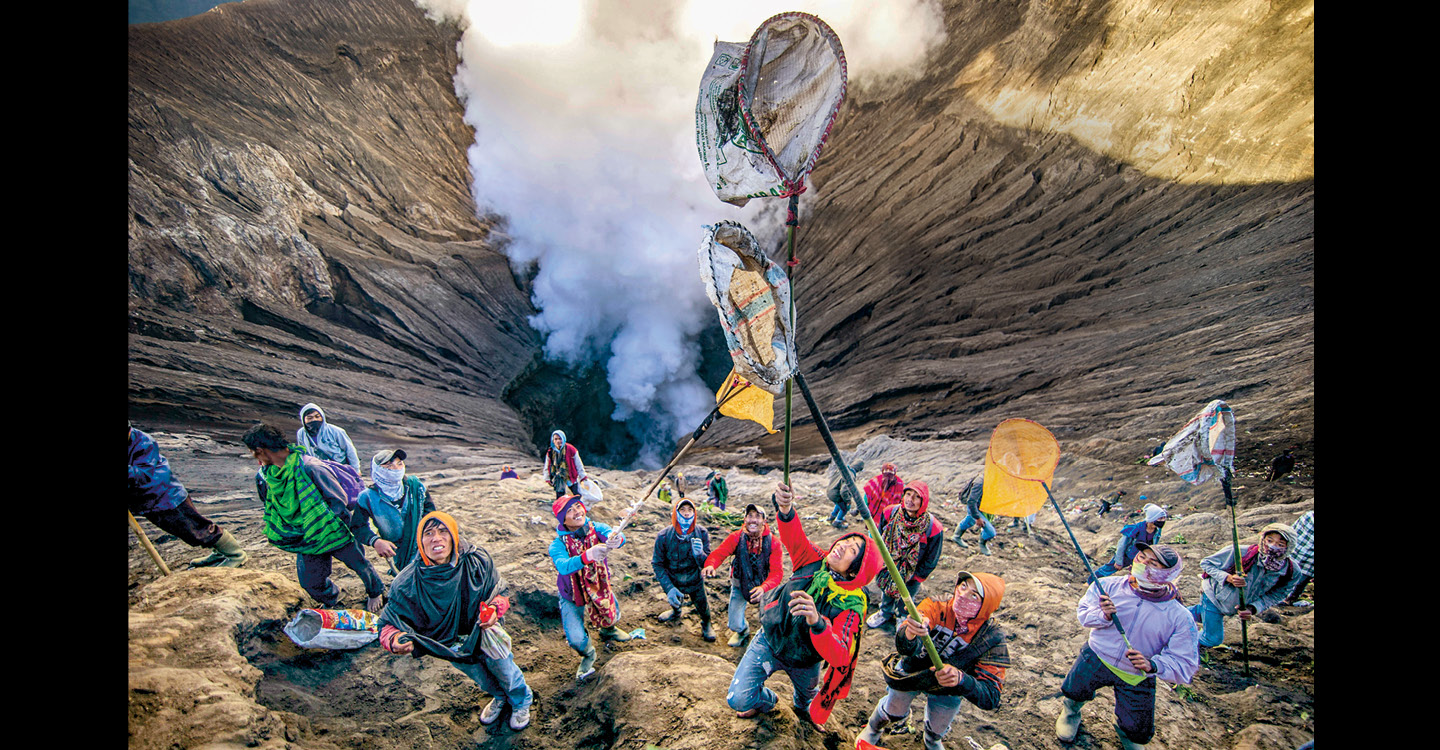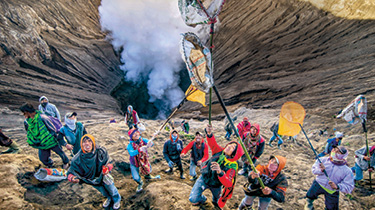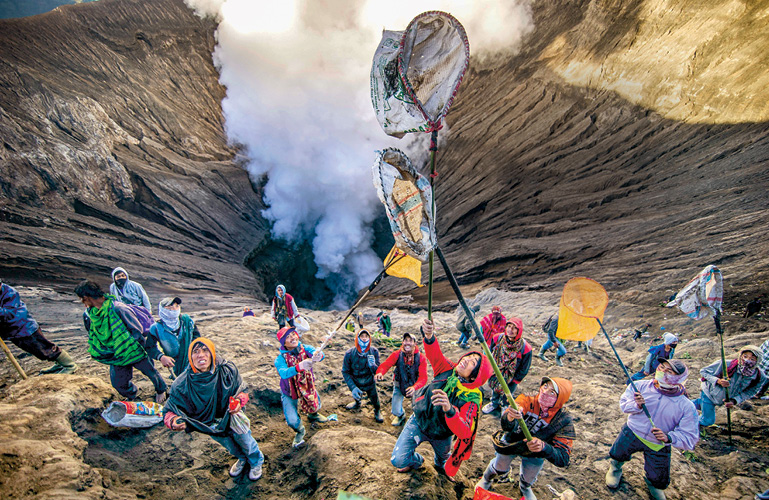Jim McMahon
Why are these people perilously perched on the top of a volcano? They came for Yadnya Kasada, an annual festival observed by the Tenggerese people in Indonesia. Every year, hundreds of Tengger Hindu worshippers climb to the top of Mount Bromo and toss offerings such as food, livestock, and money into the crater to please the gods. Other villagers who aren’t members of the Tengger tribe gather with nets to try to snag the items being thrown. It’s not technically part of the tradition and it’s dangerous work, but for many of the locals, they have little choice. About 25.9 million Indonesians live below the poverty line, and the country is ranked sixth in the world in wealth inequality. Although the festival has evolved since it originated in the 15th century, it still holds a special significance for many. “This was a way of life,” Indonesian photographer Agung Parameswara told The Week, “and today many continue this tradition inherited so many centuries ago.”



